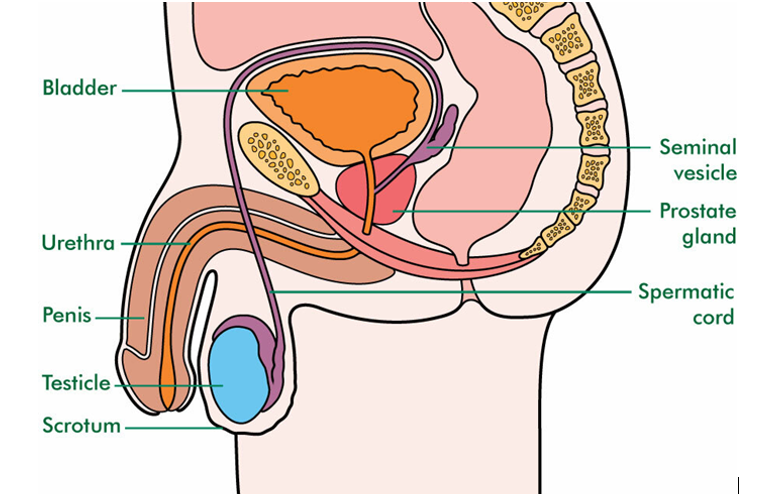Penile cancer (cancer of the penis) is rare. Almost all cancers of the penis are squamous cell cancers. Squamous cells are found in the skin. They cover the surface of most parts of the body.
Rarely, other types of cancer can affect the penis. These include types of skin cancer such as basal cell carcinomas and malignant melanomas.
Most penile cancer is diagnosed over the age of 50. But it can also affect those who are younger.
Approximately 500 men are diagnosed with it in the UK every year.
The penis
The penis is the male sex organ. It is made of different types of tissue, such as skin, muscle and nerves. During sexual arousal, blood flow to the penis increases to make it hard and erect. The penis also contains a tube called the urethra. The urethra carries semen (sperm) from the testicles and pee (urine) from the bladder out of the body
Am I at risk?
The exact cause of penile cancer is unknown. It seems to be less common in men who have had all or part of their foreskin removed (been circumcised) soon after birth. This might be because men who have not been circumcised may find it more difficult to pull back the foreskin enough to clean thoroughly underneath. The human papilloma virus (HPV) that causes penile warts also increases the risk of penis cancer.
Other risk factors include:
- Smoking
- Certain skin conditions
- Age– most penile cancer is diagnosed in those over the age of 50.
Some skin conditions that affect the penis may go on to develop into cancer if they are left untreated. It’s important to see your doctor if you notice white patches, red scaly patches or red moist patches of skin on your penis.
For more information on the risk factors for penile cancer, please follow this link.
Symptoms of penile cancer
Most penile cancers are painless. The first signs of penis cancer are often a change in colour of the skin, or skin thickening. Later signs may include a growth or sore on the penis – especially on the head of the penis (glans) or the foreskin, but also sometimes on the shaft of the penis.
Other signs and symptoms of penile cancer can include:
- Discharge or bleeding
- Pain, a lump or discharge underneath the foreskin, which is usually only seen when the foreskin is pulled back
These changes may occur with conditions other than cancer. Penis cancer is easier to treat if it’s diagnosed early, so if you have any worries it’s best to go to your doctor straight away.
For more information on the symptoms of penile cancer, please follow this link.
Patient information
For more information from Macmillan regarding penile cancer, please follow this link.
For more information from Cancer Research UK regarding penile cancer, please follow this link.
